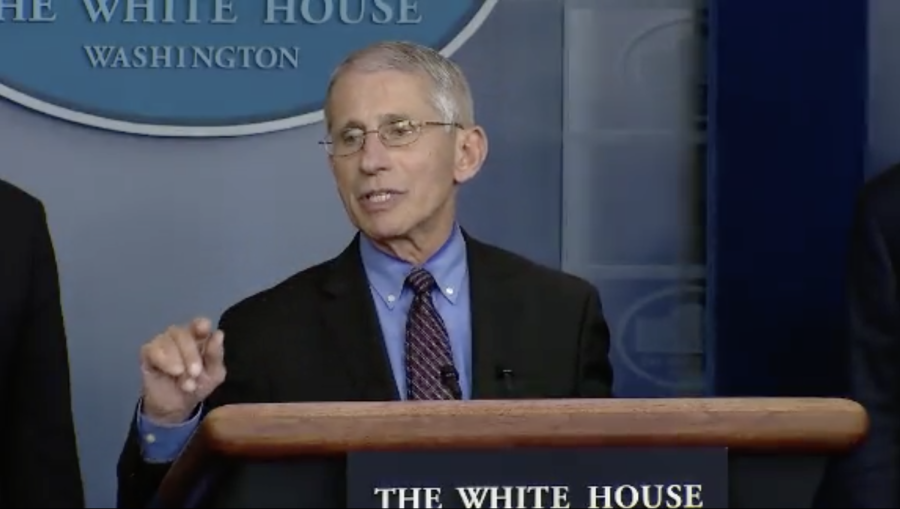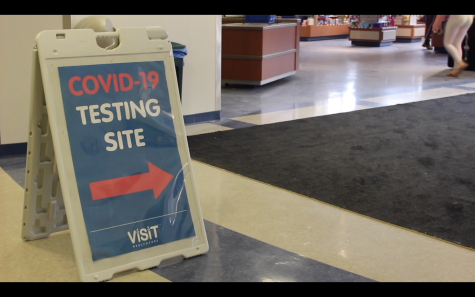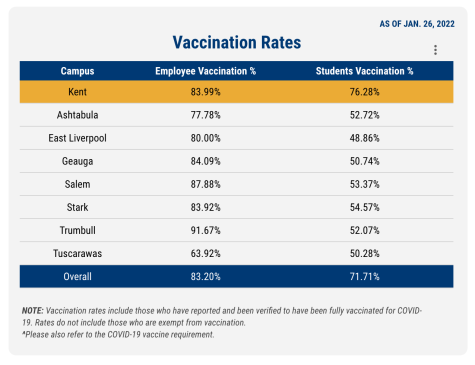Fauci warns again about the US reopening as more evidence emerges of virus’s early spread
May 12, 2020
(CNN) — As leading medical experts testify to senators Tuesday for the first time since March about government’s response to the coronavirus pandemic, more evidence is emerging that the virus was in the country earlier than initially thought.
The onset of five Covid-19 cases in five separate counties in Ohio happened as early as January, state Health Director Dr. Amy Acton has said, citing results of antibody testing.
“I think we’ll see a lot more of this. I also think there are a lot of deaths and coroner reports yet to be seen, so I think as time goes on, we will learn more and more about history with this virus,” Acton said Monday.
That meshes with a growing body of research suggesting the virus was spreading in the United States and elsewhere at least weeks, if not months, before official case counts started picking up in February and March.
Ohio will soon conduct 1,200 voluntary antibody tests to help it understand how many people already were infected without knowing it, Acton said. Some state and county governments, including Illinois’ Cook County, have said they’re reviewing deaths as far back as late last year to see whether they could be connected to the virus.
On Tuesday morning, the nation’s top infectious disease expert warned senators of serious consequences for states reducing social distancing restrictions ahead of federally suggested milestones, even with the pandemic already having claimed more than 80,000 lives in the US.
Those milestones, which the White House recommended in mid-April, include a downward trajectory in virus cases for 14 days and a robust testing program in place for at-risk health care workers.
“If some areas, cities, states or what have you jump over those various checkpoints and prematurely open up without having the capability of being able to respond effectively and efficiently, my concern is that we will start to see little spikes that might turn into outbreaks,” Fauci told the Senate Committee on Health, Education, Labor & Pensions.
The hearing is Democrats’ first chance in weeks to question leading medical experts — including Fauci and Centers for Disease Control and Prevention Director Robert Redfield — about the Trump administration’s response to the pandemic.
“What we need to hear from him is, how careful should we be?” Senate Minority Leader Chuck Schumer told CNN’s “New Day” Tuesday before the hearing. “And he seems to indicate … we have to be very careful. They (the Trump administration) don’t have adequate testing (set up).”
Some witnesses are making appearances remotely because they’re self-isolating or self-quarantining after contact with people who tested positive for coronavirus.
Ahead of Tuesday’s testimony, 54% of Americans say the US government is doing a poor job preventing the spread of Covid-19, according to a new CNN poll.
Also, a vast majority of poll’s respondents were “afraid” or “concerned” (35% and 46%, respectively) about the potential for a second wave of Covid-19 cases this year, while 18% were not concerned. Those two questions in the multi-topic poll — conducted by phone Thursday through Sunday, with 1,112 adult Americans — had a margin of error of +/- 3.7%.
So far, more than 1.35 million people have been infected in the US, while at least 80,897 have died. And the global death toll is approaching 300,000 reported deaths, according to Johns Hopkins University.
Virus may have contributed to more NYC deaths than official count shows, CDC says
Two new reports released by the CDC paint a harrowing picture of the grip and spread of coronavirus in parts of the US.
Released Monday, the reports are part of a series published by the agency as experts have raced to understand the virus, its effects and the country’s response to the crisis.
Monday’s reports home in on New York City’s death toll and California airports’ screening for the virus.
In New York City, the virus may have directly or indirectly killed far more people than the city’s official death toll shows, according to one of the two reports.
Researchers found that while the city reported 24,172 more deaths since mid-March compared to what would normally be expected, only about 19,000 of them were directly linked to the virus.
And while it’s hard to track why the other 5,000 deaths occurred, the report says one reason may be that “social distancing practices, the demand on hospitals and health care providers, and public fear related to COVID-19 might lead to delays in seeking or obtaining lifesaving care.”
Those findings add to a growing body of evidence highlighting how the pandemic may be killing Americans without ever infecting them. For example, experts have also said that a decline in reported heart attacks and strokes across the country is likely the result of people avoiding emergency rooms.
In the second report, researchers say airport screening of travelers from China and Iran failed to prevent the spread of the virus, at least in California.
More than 11,500 travelers were screened and monitored but just three ended up testing positive, according to a team from the California Department of Public Health.
The program’s effectiveness was limited by “incomplete traveler information received by federal officials and transmitted to states, the number of travelers needing follow-up, and the potential for presymptomatic and asymptomatic transmission,” the report said.
Leaders push forward with reopening
By early next week, 48 states will have relaxed at least some measures as the country moves toward reopening — but heavy debate remains around whether it’s safe to begin carving a path to normalcy just yet.
Experts and public health officials have for weeks warned a premature release of measures could drive the US death toll up by thousands.
But business owners and some local officials across the country have demanded stay-at-home orders be lifted to avoid a crash of the economy — amid an already unprecedented amount of unemployment claims in many states.
Coronavirus: Your questions, answered
In California, where the governor created guidelines last week for regions to meet before beginning to move forward toward reopening, officials in San Diego said their city is ready to go back to business.
“I admire the governor and the work that he’s been doing but I think the standard he set last week, to not allow businesses to reopen unless the counties have gone two weeks without any deaths, is unrealistic in any urban county,” San Diego Supervisor Greg Cox said. “We certainly want to work with him in a cooperative vein but we need to have standards that are attainable.”
In Louisiana, Gov. John Bel Edwards announced Monday he will lift the state’s stay-at-home order Friday, adding the state would be moving into phase one of its reopening plan.
Restaurants, casinos, churches, hair salons, and gyms are some of the businesses that can open with restrictions during that first phase, but are limited to 25% occupancy and must practice social distancing.
And in Hawaii, state officials are considering starting to take photos of all visitors flying into the state, as they continue to deal with violators of the mandatory 14-day quarantine currently in place for travelers.
“If we know someone has broken quarantine, we (currently) don’t have a photo that we can distribute and have people help us identify who they are,” Gov. David Ige said in a Facebook forum with the Honolulu Star-Advertiser newspaper Monday.
Here’s where all 50 states stand on reopening.
South Dakota governor demands coronavirus checkpoints be removed
In South Dakota, where a stay-at-home order was never issued, two Native American tribes have refused to remove checkpoints they put in place to protect their reservations from spread of the virus, despite pressure from the governor.
Gov. Kristi Noem gave the tribes 48 hours Friday to take down the checkpoints from US and state highways. Both tribe leaders refused and the governor accused the communities Monday of stopping essential traffic and first responders.
“Deliveries of gas, medical supplies and food are incredibly important to make sure that we have that facilitated through these areas,” Noem said, adding that some travelers who wanted to just travel through the checkpoints were turned around.
The tribes disputed the allegations to CNN and the governor said Monday she would not “give specific stories today.”
“We are not getting complaints and the Governor has not shared any specific complaints with us,” Remi Bald Eagle, spokesman for the Cheyenne River Sioux Tribe, told CNN.
On Sunday, the chairman of the Cheyenne River Sioux Tribe, Harold Frazier, told CNN that “99.9% of the motorists are stopped for maybe a minute or less and they’re allowed to go through.”
The-CNN-Wire™ & © 2020 Cable News Network, Inc., a WarnerMedia Company. All rights reserved.



















